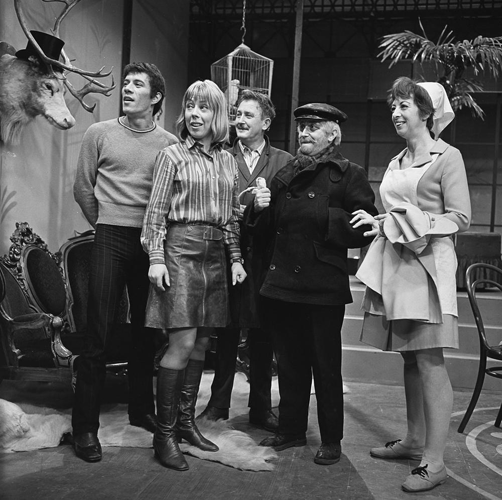ECLAP's three-step guide to clearing rights

Performing arts organisations met in Slovenia last month to discuss best practice guidelines for rights clearance. This blog is based on an article by Lotte Belice Baltussen that first appeared on ECLAP's website.
ECLAP is an online archive for all performing arts in Europe, funded by the European Commission. ECLAP contributes to Europeana with its collected performing arts records, videos, photographs, manuscripts and sketches. It also provides innovative and unique solutions and tools to help performing arts institutions manage and make their collections accessible.

Title: Scene from the performance Sirene (No. 4). Creator: Miha Fras From collection: MUZEUM. License: CC BY-NC-ND.
A major challenge that is facing performing arts organisations that want to provide online access to their holdings is that they are often unsure how to determine the rights status of these collections, and how to clear rights. ECLAP is setting up Best Practice guidelines in order to aid organisations in this process.
On 14 November, the ECLAP event 'Stage heritage at your fingertips' took place at the National Theatre Museum of Slovenia in Ljubljana. One of the objectives of the event was for the ECLAP Working Groups to get input from workshop attendees about the Best Practice guidelines established. The focus of 'WG-B on IPR and Business Models for Performing Arts Content' was the recently developed three-step guide to clearing rights. Each step suggests a question that should be asked to help organisations to determine the appropriate way to clear rights.
- Step 1 - What kind of access does my institution want to provide?
- Step 2 - Who (and where) are the rights holders?
- Step 3 - Which methods can I use to clear the rights?
This presentation from ECLAP explains more about the three-step guide.
Each attendee was asked how they are currently providing access to their collections, how they approach rights holders to clear rights, and which types of agreements and licences they make. Licences ranged from restricted access for educational use, to public access and use of the most restrictive of the Creative Commons licences which allows downloading and sharing, but does not permit making new works of the content, or commercial use - CC BY-NC-ND.

Title: Yes nurse, no nurse (Ja zuster, nee zuster). Ep. 15; Cast From collection: Sound and Vision. License: CC BY-SA
General conclusions
The workshop's conclusions are represented below in brief – please see the full story for more discussion on each area.
Grey area
The term ‘grey area’ was mentioned a lot by the workshop attendees. Many organisations often make choices to provide access to content, even if they are unsure whether all rights have been cleared.
Open up, increase impact
It was clear that many organisations see the benefit of using open licences, since they facilitate easy re-use across different platforms. However, truly ‘open’ access would also allow people to, for instance, make new works based on the content.
Keep the Public Domain healthy
It is problematic that some content providers do not mark public domain material content as such, because they do not want to lose control of the content.
Be as generic as possible
All agreed that when making new agreements with rights holders, it is vital to make them as generic as possible. Keep in mind that generic does not mean that you should not explicitly describe what types of re-use you will allow.
IPR is a personal matter
A final note was that clearing rights is more often than not a very personal experience. Rights holders are often approached individually by the organisations to sign agreements.
Read the full story and look out for updates on ECLAP's blog.
